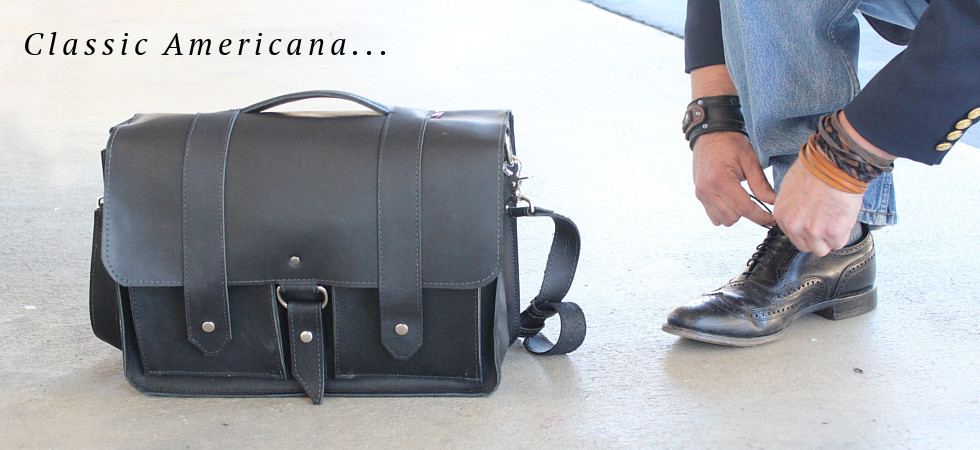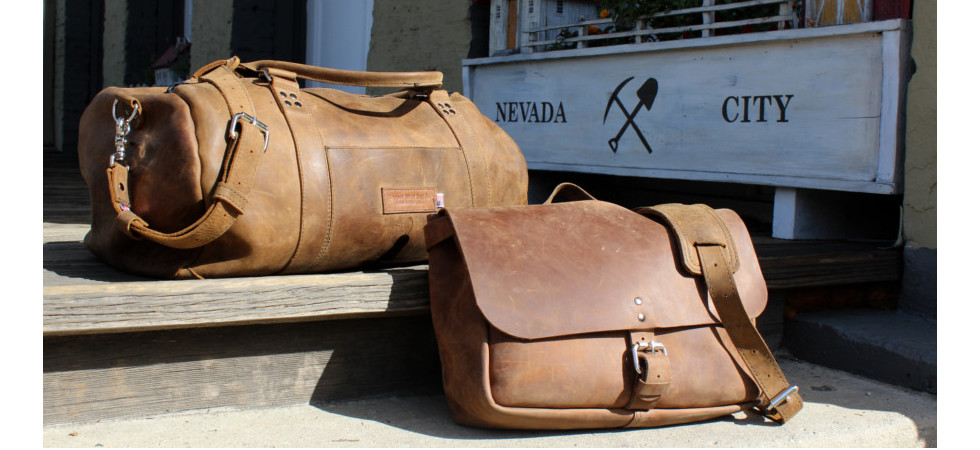21 Facts About The History Of Leather Plus Some Bonus Trivia
Posted by Holly Williford on 26th Dec 2014
If you couldn’t tell already by looking at our Leather Information or About Us section, we at Copper River Bags are passionate about the leather making industry. To us, knowing the ins and outs of the trade is key to succeeding, which is why we try to know about anything and everything leather. Plus, who doesn’t love a little bit of trivia knowledge on hand?

That is why we compiled a list of some of the most interesting facts about leather
for you, our readers and customers, to enjoy at your leisure. We hope you learn
a thing or two of interest in this list of 21 Facts About Leather that will
enrich your knowledge of the leather industry and production.
1.Very early in the history of man, in the prehistoric era, he began to make leather out the hides of his hunt for shelter and clothes.
2.In records, the earlier evidence we have of leather dates back to 1300 BCE.
3.Leather is an industry that existed at least in Africa, China, and more as well as Europe from an early time period.
4.Using smoke, vegetables and fat are all ancient forms of tanning leathers, but the technology has continued to improve throughout history.
5.One of the first written records of leather tanning is Homer’s Illiad and various written from the Assyrians.
6.Around the 12th century was when humans developed the technology needed to dye leather for decorative purposes.
7.The original process of tanning leather took workers around one year, but as technologies were introduced over the centuries, the time gradually shortened. Now there is the technology available to tan leather in just a matter of days.
8.In archaeological sites, there are similar tools for leather-making found in just about every workshop. Even a leather tannery found in the ruin of the ancient Roman city of Pompeii had the same tools that are used today.
9.In early societies, the secrets of leather making were closely protected by families that made the leather. The father would pass down the secret to his eldest son, who would continue the craft for the next generation.
10.During the Middle Ages, leather workers would group together into guilds.
11.Around the same time governments began to issue licenses for leather makers to work in their field.
12.In the U.S., the leather industry was putting out bad product of mixed quality in the 1940’s and 50’s when the issue was investigated. They found that over half of shoes being sold as leather, were actually being made using non-leather materials.
13.Recently the Library of Congress had to find a way to save the leather binding of books. A silicone emulsion to mat down the leather to prevent further deterioration was invented.
14.Throughout history, leather has been used as a book binding since it provides many desirable proactive properties to books; leather binding protects paper from high temperatures, high humidity, low humidity, light exposure, dust, pollution, mold and bugs.
15.In 1965, a type of sheep leather, shearlings, was used to prevent and treat bed sores for patients who had long stays in hospitals.
16.At different points in history, leather from certain types of animals has been coveted. The most recent example of this anomaly was the trend of making leather from crocodile and snake skins.
17.Thailand used sting-ray leather to make belts and wallets.
18.Kangaroo leather, which is abrasive-proof, is often used in products that need that property, i.e. motorcycle clothing.
19.Collagen is a by-product of the leather making process that is used in many food and cosmetic products.
20.Scientist are continuing to develop more environmental friendly and efficient ways to produce leather using modern technology.
21.Today in the United States the leather market is bigger than ever and growing. In first half of 2014 alone, the leather industry exported $1.43 billion worth of leather.

Leather: A History Worth Investing In
When we look at the foundations of leather making as well as some modern applications, it becomes clear that leather is an integral part of the past and present of humanity. From the earliest of pre-recorded times humans found a way to make leather to help their primitive societies to survive. Today we are still using it for fashionable and practical purposes. The future of leather will continue to bring on new innovations that will change the leather industry and outside fields we may know them, and we at Copper River Bags look forward to being a part of that development.
The fact is when you purchase leather, you are buying into this dream; especially when you buy from companies like us, Copper River Bags. We are passionate about every element of our leather making process from the way we treat our workers to the last thread of every bag. The whole handcrafted process to us is more than just about making a product, it is about building a legacy of leather making that we can pass down like the great leather makers of the past.
So we ask you kindly to please take a look at our products to begin to learn about all the different features our long-lasting products have to offer. Between things like the military grade thread, solid brass hardware and 100% full grain leather, you are going to love the quality that you see exemplified in our leather bags and accessories. In addition, all of the products are handcrafted by our artisans in a workshop in the United States.
If you are all about standing up for integrity when it comes to nurturing economic development, then Copper River Bags is the company for you. We are the type of purchase you make when you want a product that will last for the long haul without needing to be replaced a couple years down the road. Come join our family at Copper River Bags today by taking a look through the rest of our website.